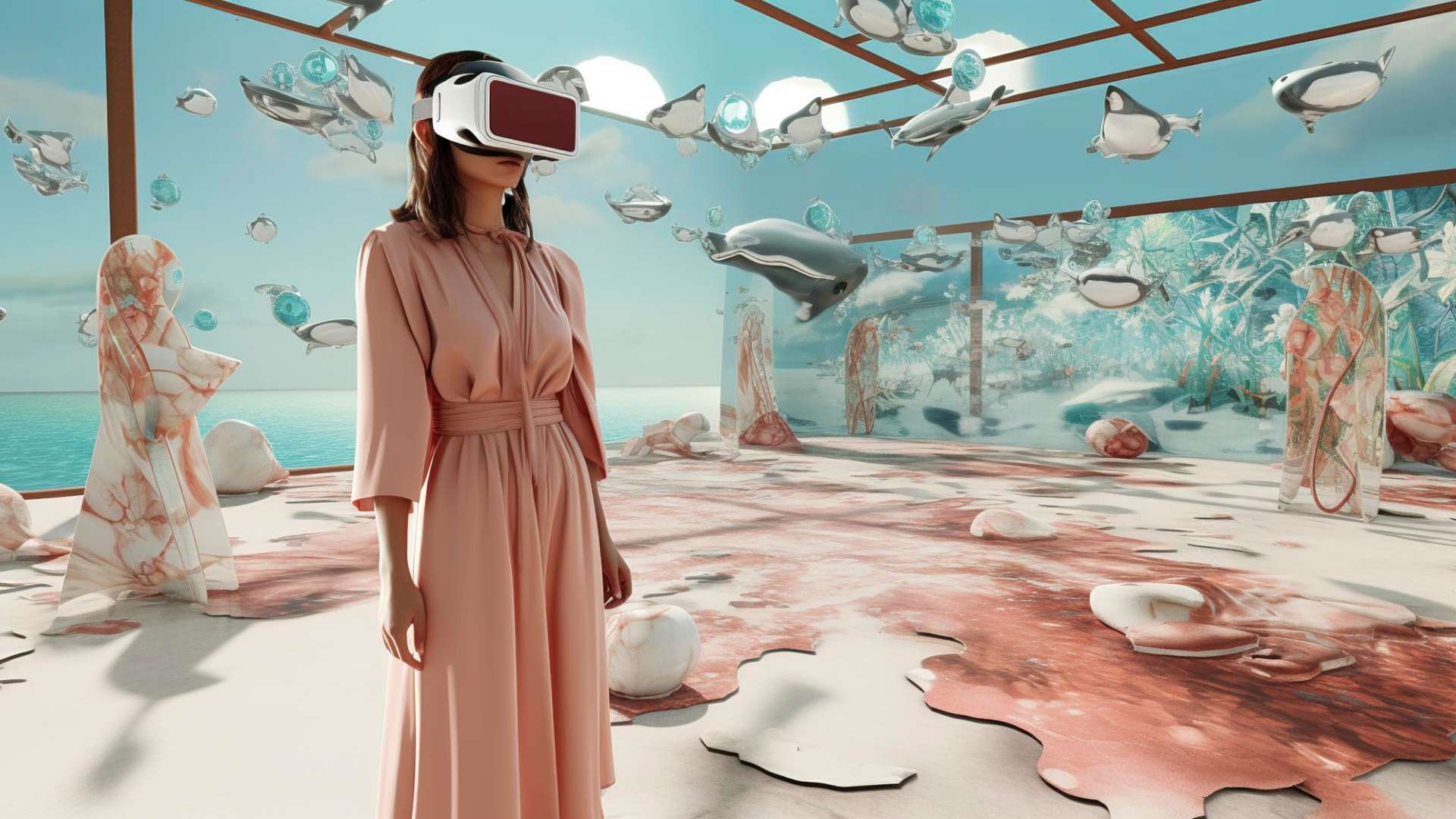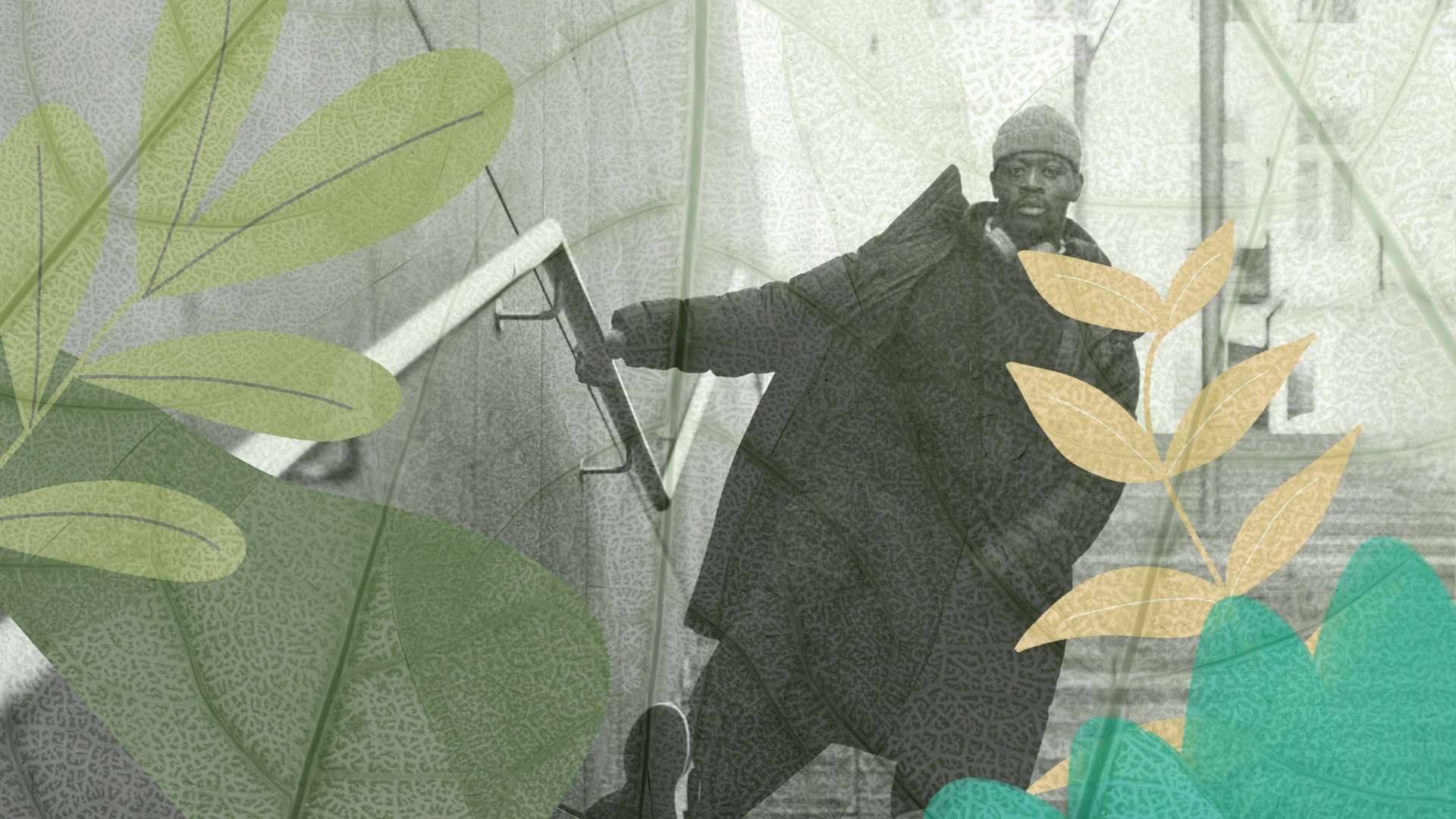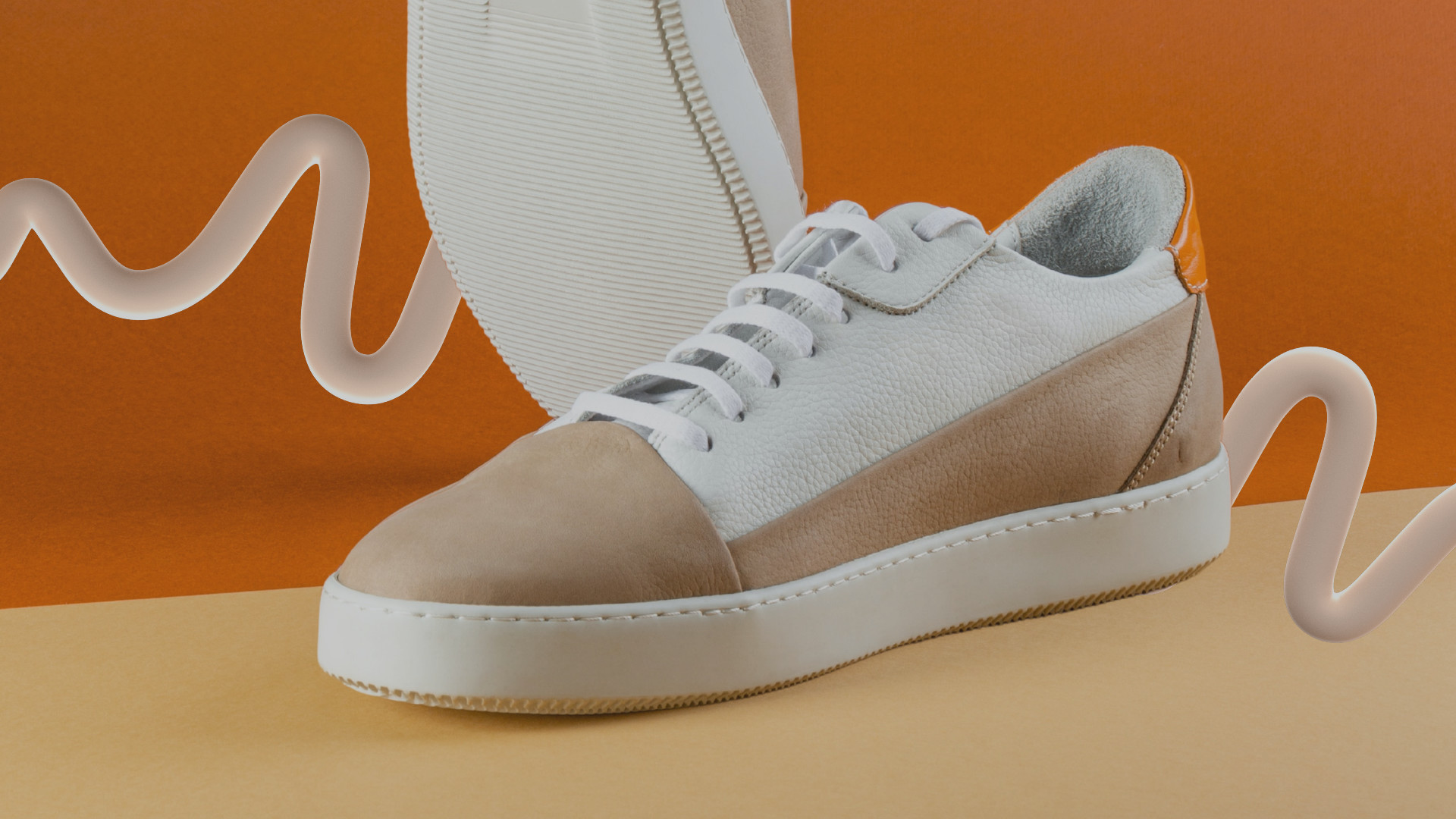In some senses, 3D is now deeply embedded in fashion. Many major brands use 3D simulation to make critical choices, and remove interpretation from their relationships with suppliers. And 3D renders are increasingly populating eCommerce catalogues in place of traditional product photography.
But in other ways, 3D adoption remains limited. Enterprise-wise adoptions are the exception rather than the rule, and while working in 3D has delivered significant value in sampling, larger opportunities are often being left on the table.
This acceleration and expansion of the possibility space of 3D in fashion is where a new technology player, Style3D, is aiming. Founded by Eric Liu, who blends deep digital knowledge with extensive supply chain experience, Style3D has and continues to develop a more complete, cohesive platform for 3D collaboration across the entire value chain.
Eric was joined by Danny Reinfeld, who heads up Style3D’s operations in Europe, to talk to Mark Harrop fashion technology veteran about where 3D goes from here, and how a new entrant to the market could become the catalyst for a fresh perspective on the possibilities of 3D fashion. Their full conversation is captured in the video below.
The video is followed by a transcript that has been edited and condensed for readability. We encourage anyone interested in where 3D for fashion is headed in 2022 and beyond the watch the entire video interview for additional insights and inspiration.
Mark Harrop: My own experience in 3D started in footwear, in the mid-1980s, before 3D technology moved into apparel in the late 1990s, so the industry has had a lot of time to mature. The combination of advancements in hardware and software over the last twenty years allow us to do things today that we could have only dreamed of when this journey started.
But it’s also my personal opinion that it’s only really in the last decade that uptake of 3D has really accelerated end-to-end, upstream and downstream. Along with those advances, the pandemic has also had a powerful impact on the fashion and textile industry, which isn’t going away any time soon. So today I believe 3D is seen as a technology pillar the same way as ERP, PLM, and CAD systems have become critical to the fashion sector: 3D is a must-have technology for most retailers, brands, and their manufacturers.
So, my first question is what prompted Style3D to enter the fashion market with a new 3D solution, and what you feel you can do better than the current players that have been in this space for decades?
Eric Liu: Based upon my past working experience, I found that today’s apparel industry has some widespread issues like confirming designs and patterns repeatedly before production, which leads to high labour cost, time cost and extra material cost. Also, it was hard for us to communicate with our colleagues and clients, low approval rates of sample adoption, low utilization of design resources – amongst just a few of the issues encountered.
We took these challenges and developed a list of problem statements linked to real-life use-cases and then went to work to develop 3D as a platform, we also wanted to change 3D and look at the architecture moving away from point solutions to a modern platform ecosystem model, rather than a set of disconnected tools. With the aim to reinvent the end-to-end value chain, by using a virtual design, development, and customer experience platform of apps.
Our new platform allows apparel enterprises to maximise the efficiency and optimizing the entire process, by moving away from a manual to a digital end-to-end 3D set of processes.

Meanwhile, as the real garments could only be stored in the warehouse, we hope our products could help transform the use of real garments and move the process forward by changing physical products (garments or other related items) into new digital assets, making the end-to-end process more efficient, orderly, and much more convenient for all the stakeholders, which will ultimately help the apparel enterprises.
Mark Harrop: It could be said, though, that it was late to enter the market with a 3D solution for fashion. Why do you feel Style3D can stand out in a sector that’s already quite busy?
Danny Reinfeld: First, thanks for giving us the opportunity to talk about ourselves. Coming back to your question, I don’t think it’s late at all – in fact I think the industry is primed for the introduction of different technologies. Like you said, there’s been an uptake in adoption of 3D tools by designers and merchandisers more so in the past decade, and especially during the pandemic. But if we scratch beneath the surface, I think we’ll find that adoption is actually quite limited, and there are a lot of challenges to scaling 3D further into the value-chain.
Users of existing 3D solutions have told us that it still takes a long time to create a digital garment, and that they still need a different skill set from traditional design – you still need to be a 3D modeler rather than a creative fashion designer. Users simply want to drape their designs on a 3D avatar and focus on their creativity.
There is also more digitisation to be done when it comes to fabrics and trims, which are critical parts of the digital puzzle. At Style3D, we’ve worked with fabric mills and trim manufacturers to really see things from their side, and we see ourselves as being able to create a bridge between the brand, design world and more so today manufacturing. And we’re confident that we can drive further adoption of 3D that way – from the initial fabric straight through to design and then back to manufacturing.
Mark Harrop: That’s something that’s been on my mind for a long time: if what the industry wants is a true virtual twin, then without fabrics and trims, we’re only partway there. Thinking about traditional point solutions – those are often only focused on one aspect of 3D, and they rely on other solutions to feed in materials and trims into the 3D space. That brings to mind the industry’s whole approach to software architecture and applications design. Can you tell me how you think about these challenges at Style3D?
Danny Reinfeld: We have a different and, I believe, unique approach. Our aim is to serve the individual whoever that individual might be – whether they’re a designer, a garment technician, a patternmaker, or someone working in quality assurance. Whoever they are, they need a best-of-breed solution that lets them do their job. But they also need to work together, to collaborate, and they need to be able to share digital outputs in a way that’s effective, efficient, and fast. And that’s were having an always-on cloud ecosystem comes in.
At Style3D we already have solutions for all those individuals. They’re in place, they’re being used around the world, and they’re delivering results, including within manufacturing. What we want to do is take things one step further by creating an infrastructure on top that allows all those different types of users to exchange data quickly. If I’m looking for a fabric for my new fall collection, I want to go online and instantly see what’s availability around the world – from a range of different fabric mills of all sizes. I don’t want to have to email them and ask them to send me swatches – I want to see a fabric, download it, and drape it.
And I think that’s the shortcoming of today’s solutions. They’re looking at 3D in isolation, rather than asking how it can help to really reinvent their customers’ companies. Our aim is to help brands to do more – to reach their customers faster, increase their top lines and serve new markets quickly, efficiently, and profitably.
Mark Harrop: As an advisor working on 3D projects, one of the first questions I ask a brand or retailer is what they want 3D for. And the answer is usually either that they need to create 3D virtual samples to share them with wholesale partners and consumers, or that they want to improve the way they communicate and collaborate with manufacturers. In the context of the way you’re thinking about 3D, do you still see those as the most common use cases?

Danny Reinfeld: Those are definitely two popular use cases, but I think the challenge that many brands and retailers are really trying to address is how they move their business to the next generation. Creating samples more efficiently is really taking care of a symptom rather than addressing the overall problem, because brands aren’t in the business of creating samples – they’re in the business of creating products. So, I think we’re going to see more use cases that are focused on business enablement – on making better products that will help the brand to sell more.
I also think the next step in the digital revolution is for companies to start getting the same experiences and solutions into the hands of their customers, and really doing mass personalisation, or selling digital garments to wear in digital worlds like the metaverse!
Mark Harrop: You mentioned that Style3D has been working with mills, and focusing on knitting and weaving. Can you share some insights into some of the challenges and benefits of addressing the supply chain in that level of detail, and how those inputs and outputs will have an effect across the entire extended value chain?
Eric Liu: Our current 3D solutions help apparel enterprises to optimise their processes. As I’ve already stated, we start the process from fabrics and accessories to digital styles, and we then use 3D garment modelling for different application scenarios like style recommendations and sales, which is very efficient.
However, we gradually found that this was of limited use in 3D customisation, so based upon customer feedback we began to really analyse the knitting and weaving process. We looked at yarn dyed fabrics, jacquard knitting, and related methods. And we found that customers first customise the appearance of those kinds of 3D materials and clothing, and then transfer the information into production. The manual methods they use for this are time-consuming and quite limited in terms of production efficiency, the production cycle is long, and it’s often expensive based on minimal sample orders. Also, customers cannot direct feel the fabric.

However, this is still a necessary step in the field of apparel customisation.
Mark Harrop: You’re right: in the physical world it’s very easy to touch a fabric, but in the virtual world it’s still practically impossible. I’ve been working with a new lab that’s doing some incredible work in haptics, so hopefully we’ll see a big leap forward there soon. It’s also important to remember that, at the end of the 3D process, we need to make physical products – whether they’re prototype samples or small production runs. And for that we need technical specifications. So, with that in mind, how extensive are the PLM capabilities of Style3D?
Danny Reinfeld: I couldn’t agree with you more. In order to produce something, we need specifications.
To be clear, we don’t see ourselves as a future PLM provider. There are aspects of what you’ll find in a PLM platform, such as collaboration, being able to quickly share data, images, and digital assets, that we already have great cloud-native tools for. And we’re also going to be introducing more functionality in those areas, too, such as creating a bill of materials. But there’s a whole world out there that PLM is just too big for; they need solutions that are easy to implement, and that a given department can use to initiate a digitisation project.
The historic approach with PLM has always been to get everyone on board. That’s what’s necessary to really get a PLM platform to live up to its possibilities. And you plan that, further down the line, there’s going to be a payoff for the disruption involved in getting everybody to change all at once.
With Style3D, you can get that ROI very quickly, with minimal disruption. So unlike PLM, you can start in any place and work your way top-down or bottom-up, but in a way that causes the least possible disruption to your organisation and your technology ecosystem.
Mark Harrop: You mention Style3D as having the cloud as a starting point, contrasted against other solutions that might have moved to the cloud. Can you expand on what that means to your users? How will they benefit from that architecture, and where do you plan to take it in the future?

Eric Liu: At present, our cloud platform is mainly used for the accumulation and accessibility of digital assets: fabrics, accessories, virtual models, and styles. In the future, we will focus on developing more cloud application scenarios, such as cloud simulation and cloud rendering. I believe that with the help of the cloud, we can greatly improve computing speed and can take our 3D platform to a new level that will help our clients better leverage and scale their 3D projects.
Mark Harrop: Technology is one thing, but without education these kinds of journeys are going to be extremely difficult. How are you approaching training and onboarding at Style3D?
Danny Reinfeld: That’s a really important piece of the puzzle, and it’s one we’re working hard to address. We’re doing that in two ways: working with universities and technical colleges to make sure there’s a steady flow of competent and capable talent, equipped with the skills they need in the twenty-first century. The second is less formal, because right now the industry doesn’t have a large enough pool of that talent available, and it’s incumbent upon us as a technology supplier to empower people to make the most of digital tools. If you look online, you’ll see we’ve built a lot of tutorial and help videos, to allow people to train online, at their own pace and on their on time. And we’re enlisting communities of people to share their experience – because we recognise that people learn differently today, and we know that it’s super important for users to see other people who’ve had success with similar projects and are excited about it.
Mark Harrop: When it comes to sustainability, we as an industry are no longer at the discussion phase. We’re in action mode, and especially since COP26. What is Style3D doing to support sustainability and the environment?
Danny Reinfeld: I think most people already recognise that working in 3D, and generating 3D samples, can improve sustainability by reducing dye usage and cutting the number of samples being shipped around the world. But if we’re going to get to the true impact of what 3D can do, the industry needs to pursue further adoption with tools that are scalable and that can be used across the entire process – not just for one set of individuals. So going back to our previous points, we’re starting with digital fabrics – making those available via the cloud – and supporting digital printing, which are just a couple of the ways we see Style3D, and 3D in general, supporting sustainability.
Mark Harrop: And where is Style3D going from here? What developments do you have planned for the next couple of years?
Eric Liu: Business models are rapidly changing – partially driven via the ongoing effects of the Pandemic. This will not only be limited to the adoption of new tools, but also virtual content and services coming from multiple providers. Combined, these will seamlessly support new business models that will improve the future of production processing and new digitized supply chains, even virtual fashion as an element that will enable the use of metahumans in future metaverse. Personally, I’m very excited about what’s to come in future years!
Danny Reinfeld: We’re also going to see a lot of changes in avatars, which are going to make 3D assets feel a lot more lifelike. Today’s avatars are still quite plastic-looking, and while we can always see how the fabric is being impacted by the body in 3D simulation, we don’t get to see the reverse. That’s going to be a real game-changer, because we’ll be moving beyond technical fit and towards the question of whether a 3D garment looks good on a realistic-looking body.
Mark Harrop: I want to say thank you on behalf of all the readers of The Interline and WhichPLM. I look forward to seeing how Style3D develops in 2022 and beyond.
For more on Style3D, check out www.linctex.com. To dive deeper into the implications of 3D adoption for the supply chain and a suite of other use cases, read The Interline’s collaboration with Style3D: 3D, Bridging The Brand-Supplier Divide.
For enquiries, please contact – marielle.pesant@style3d.com.




